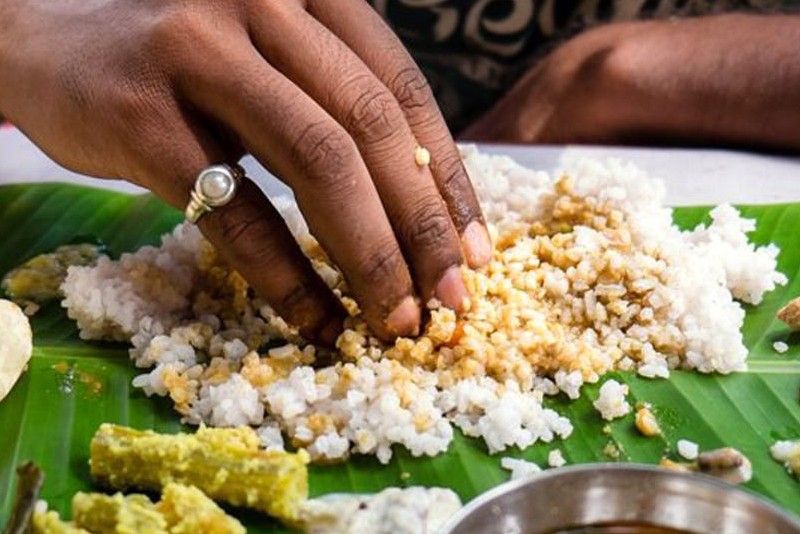Can eating rice prevent obesity?

Contrary to the stigma against carbs’ effect on good health, a recent study using data from over 130 countries concluded that eating more rice might protect against obesity.
You are what you eat, as the old adage goes. While this figure of speech can be interpreted many different ways, science actually backs this one up.
The western and eastern diets are very different. Each nation and region has their own delicacies and specialties, but one commonality among most countries in Europe versus Asia is our staple carbs. They eat mostly potatoes, wheat or corn, while we eat mostly rice.
Rice is typically served with all main meals across most Asian households. In fact, rice is such an important part of meals in China that fan, the word for rice, is included in breakfast, lunch and dinner.
What are the implications of this? Contrary to the stigma against carbs’ effect on good health, a recent study using data from over 130 countries concluded that eating more rice might protect against obesity. Could this be too good to be true? Let’s examine the facts.
The World Health Organization (WHO) estimates that at least 2.8 million people die each year as a result of chronic diseases related to being overweight or obese. WHO defines overweight as a person with a BMI greater than or equal to 25 and obese as a BMI greater than or equal to 30.
Raised BMI is a major risk factor for lifestyle-related diseases such as heart disease, stroke, diabetes, osteoarthritis and some cancers, including endometrial, breast, ovarian, prostate, liver, gallbladder, kidney, and colon.
In the Philippines, obesity among adults is gradually increasing. According to the World Health Organization, in 2010, 21.5 percent of Filipinos 18 years and older were overweight and 4.1 percent were obese. This increased to 23.6 percent and 5.1 percent, respectively, in 2014.
The Asia Roundtable on Food Innovation for Improved Nutritionalso reported overweight prevalence in the Philippines at 23.6 percent and obesity at 5.1 percent in 2016. Obesity affects 18 million Filipinos and costs us around US$500 million to $1 billion in healthcare spending every year.
Despite the increase in these numbers, overweight and obesity rates in the Philippines remain lower than the global average of 39 percent of adults 18 and older overweight and 13 percent obese. Similarly, fellow Asian countries such as Japan have obesity rates that fall below the global average.
Researchers from Doshisha Women’s College of Liberal Arts in Kyoto,Japan, recently presented their findings at the 2019 European Congress on Obesity in Glasgow, United Kingdom. They examined data from 136 countries and found that nations where people ate at least 150 grams of rice per day had significantly lower rates of obesity.
The researchers took as many variables as possible into consideration, including average education level, smoking rates, total calories consumed, money spent on healthcare, percentage of the population over 65, and gross domestic product per capita.
According to lead researcher Professor Tomoko Imai, “The observed associations suggest that the obesity rate is low in countries that eat rice as a staple food. Therefore, a Japanese food- or an Asian food-style diet based on rice may help prevent obesity.”
The study estimates that an increase of one-fourth cup of rice per day could reduce global obesity by one percent. That would reduce the number of obese adults all over the world from 650 million to 643.5 million.
“Eating rice seems to protect against weight gain,” said Professor Imai. “It’s possible that the fiber, nutrients, and plant compounds found in whole grains may increase feelings of fullness and prevent overeating. Rice is also low in fat and has a relatively low postprandial blood glucose level, which suppresses insulin secretion.”
Despite these significant new findings, several doubts still remain. Distinguishing cause and effect on diet on such a large scale is extremely difficult. The accuracy of using country-level data presents some drawbacks as certain regions of some countries may eat substantially more rice than others. Obesity rates can also vary from region to region within the same country.
Furthermore, the study doesn’t take into account the type of rice that is consumed. This may be a significant factor in the role rice plays against obesity as the amount of fiber in certain types of rice is higher than others. White rice, for example, has lower fiber content than less-processed variants. Fiber plays a significant role in obesity risk. Other studies have also suggested that there is a relationship between white rice and the risk of Type 2 diabetes.
Scientists should continue to examine the impact of rice on obesity. While many factors affect obesity, most of these are lifestyle-related and can be managed or controlled. Rice is cheap and easily accessible all over the world. If there is a chance that it can help even a little in the fight against obesity, it is worth pursuing as it can help millions.
* * *
Post me a note at mylene@goldsgym.com.ph or mylenedayrit@gmail.com.



















